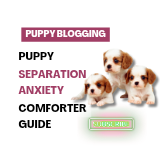Understanding and Easing Separation Anxiety in Dogs
- Dec 4, 2024
- 3 min read
Updated: Feb 20
Separation anxiety is a common issue many dogs face when left alone. For some, it manifests as excessive barking, destructive behaviour, or even physical signs like drooling or pacing. While it’s distressing to see your beloved pet struggle, the good news is that, with patience and the right approach, you can help your dog feel more secure and confident when you’re not around.

Why Does Separation Anxiety Happen?
Dogs are naturally social animals, and they thrive on companionship. When left alone, some may feel uncertain or afraid, especially if they haven’t been taught how to cope with solitude. This can be more pronounced in rescue dogs, puppies, or pets who’ve experienced a sudden change, such as a move or a new routine.
The pandemic also played a role in increasing cases of separation anxiety. Many dogs grew accustomed to constant human presence during lockdowns and struggled to adjust when life returned to normal.
Signs of Separation Anxiety
Common symptoms include:
Barking, whining, or howling when left alone.
Chewing furniture, scratching doors, or other destructive behaviour.
Escaping or attempting to escape confined spaces.
Loss of appetite or refusal to eat when alone.
Excessive drooling, panting, or pacing.
If you notice these behaviours only when your dog is left alone, separation anxiety is likely the cause.
How to Help Your Dog Feel More Comfortable
Gradual Alone Time Training
Start by leaving your dog alone for very short periods, even just a few minutes, and gradually increase the duration. Use positive reinforcement, such as treats or praise, when they remain calm.
Create a Safe Space
Ensure your dog has a comfortable, secure area they associate with positive experiences. A cosy bed, their favourite toys, and a calm environment can help them feel safe.
Build Positive Associations
Give your dog a special treat or puzzle toy only when you leave the house. This helps them associate your departure with something enjoyable.
Avoid Emotional Goodbyes and Reunions
Try to remain calm and neutral when leaving and returning home. Over-the-top goodbyes or greetings can heighten your dog’s anxiety about your absence.
Exercise and Mental Stimulation
A well-exercised dog is generally more relaxed and less likely to become anxious. Before leaving, ensure your dog has had a good walk or play session. Mental stimulation, such as interactive toys or training, can also tire them out.
Consider Professional Support
If your dog’s anxiety persists, working with a professional dog trainer or behaviourist can make a significant difference. They can create a tailored plan to address your dog’s specific needs. And if you are gone for chunks at a time, consider getting in a reputable dog walking company.
Try Calming Aids
Some dogs benefit from calming supplements, pheromone diffusers, or anxiety wraps. Consult your vet to explore options suitable for your dog.
Patience Is Key
As with most things in dog training that will work well, helping a dog overcome separation anxiety takes time, but consistency and a positive approach can lead to lasting improvements. Remember, your dog isn’t acting out of defiance—they’re expressing genuine distress. By understanding their needs and providing support, you can help them feel confident and secure, even when you’re not there.
With your guidance, your dog can learn that being alone isn’t so scary after all—and coming home will always be their favourite part of the day!










Comments